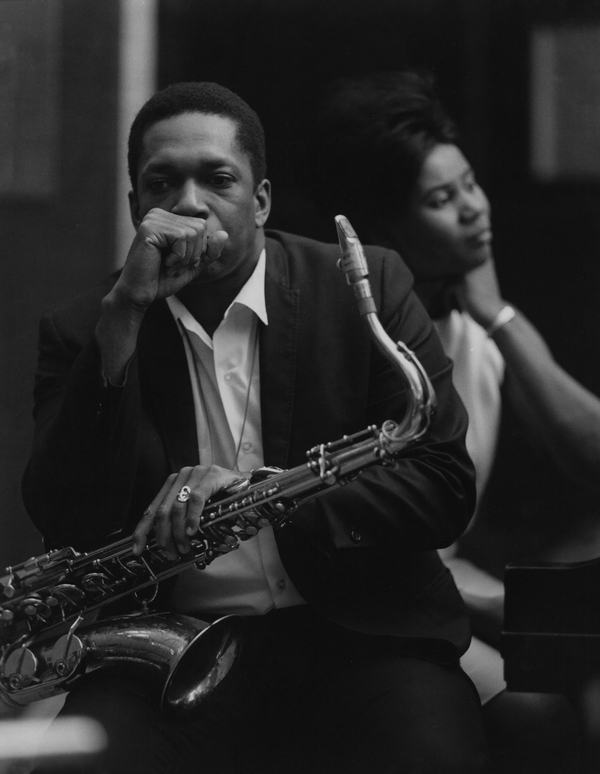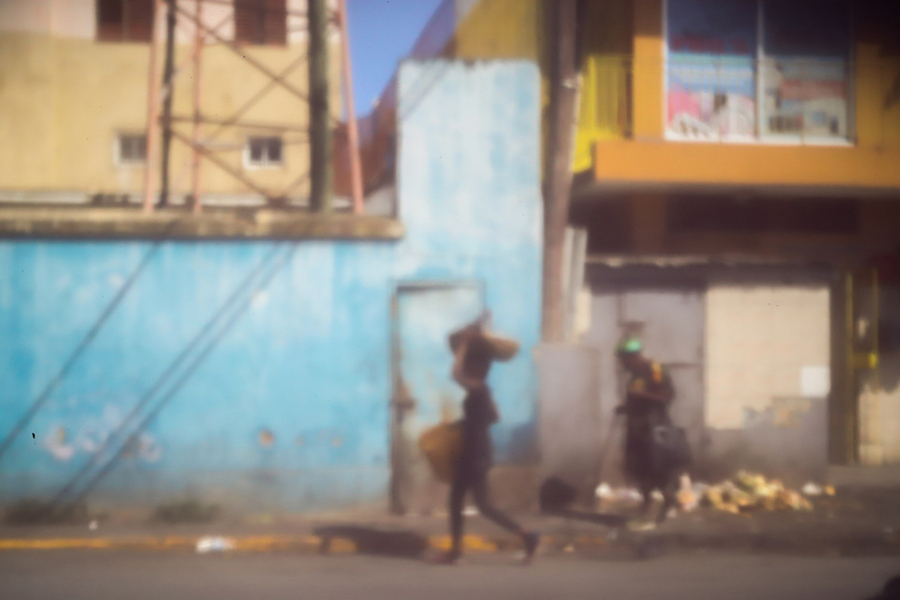 Christina Leslie, Galang, 2025. © Christina Leslie / courtesy Stephen Bulger Gallery
Christina Leslie, Galang, 2025. © Christina Leslie / courtesy Stephen Bulger GalleryIn her first solo exhibition at Stephen Bulger Gallery, Canadian–Jamaican artist Christina Leslie’s Pinhole Portraits and Places brings together three bodies of work made between 2017 and 2025: Pinhole Remix, Pinhole Places, and Pinhole Parishes. The exhibition expands on the recurring themes of decolonization, identity, migration, marginalization, and heritage, while showcasing Leslie’s unique fusion of historical photographic techniques and contemporary methodologies.
As a response to the constant and rapid advancements of digital photography, Leslie began exploring historical photographic techniques in 2016. Her reflection on and re-engagement with the roots of analogue photography resulted in a body of work that highlights early photographic practices, particularly the pinhole camera. After extensive experimentation and several unsuccessful attempts, in early 2017 she successfully transformed her digital SLR camera into a functional pinhole camera.
 Christina Leslie, Max, Shabazz, and the BK steps, 2023. © Christina Leslie / courtesy Stephen Bulger Gallery
Christina Leslie, Max, Shabazz, and the BK steps, 2023. © Christina Leslie / courtesy Stephen Bulger GalleryPinhole Remix (2017–20), the first series using her adapted camera, came to fruition in response to the glaring absence of Black representation in historical European art, where depictions often reflected a colonial, white-dominant perspective. Her pinhole portraits of Black community members challenge this exclusion and reframe art history and the early history of photography. Utilizing long exposures, her works evoke the grandeur of commissioned paintings. The resulting images, with their rich colour and warm lighting, draw inspiration from Renaissance and Rembrandt-style techniques. By adopting practices traditionally reserved for portraying nobility and conveying social hierarchies, Pinhole Remix provokes conversations about race, representation, and the narratives embedded in art history.
 Christina Leslie, Stephanie, 2020. © Christina Leslie / courtesy Stephen Bulger Gallery
Christina Leslie, Stephanie, 2020. © Christina Leslie / courtesy Stephen Bulger Gallery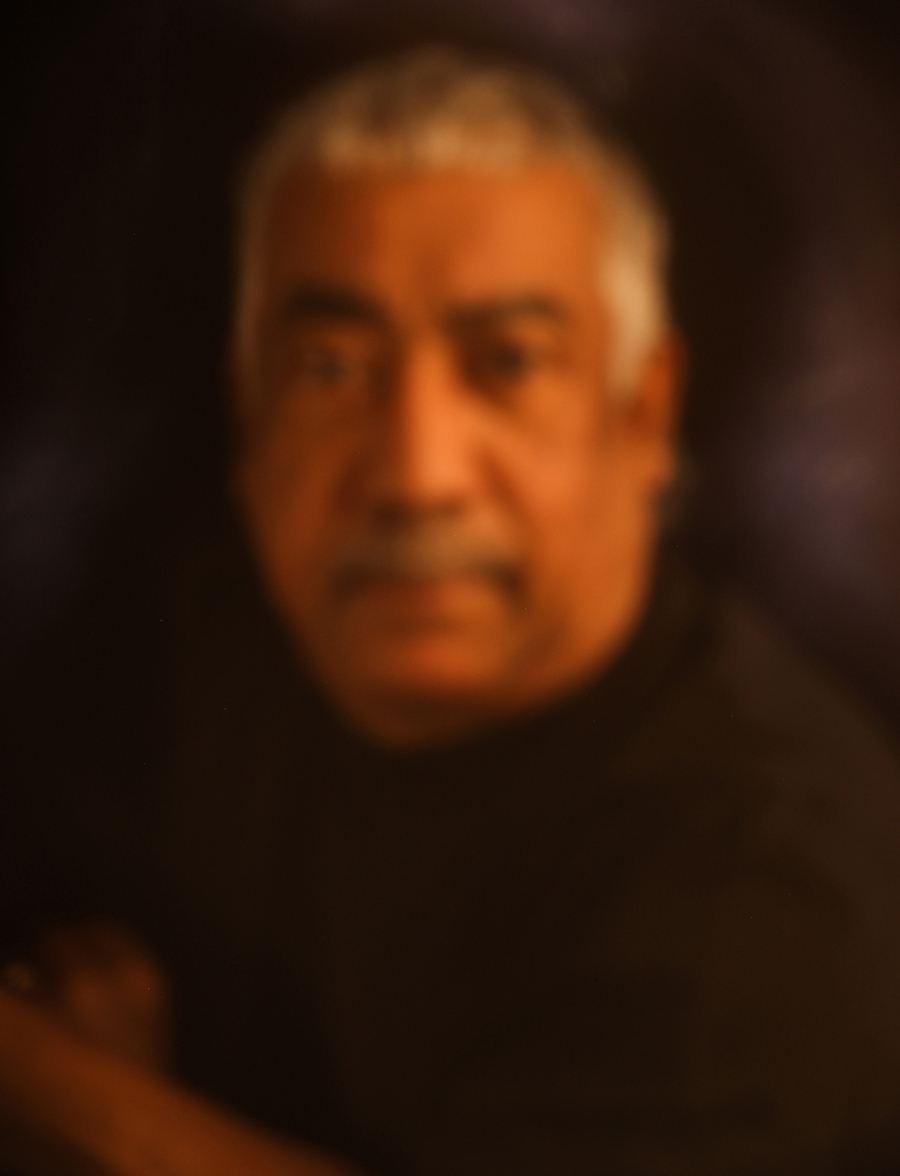 Christina Leslie, Dad, 2020. © Christina Leslie / courtesy Stephen Bulger Gallery
Christina Leslie, Dad, 2020. © Christina Leslie / courtesy Stephen Bulger GalleryThe visual language of Pinhole Places (2022–25) emerged from Leslie’s desire to connect with the spontaneity of street photography, but also to further delve into the malleability of the photographic apparatus itself. Inspired by Uta Barth, whose ethereal work explores perception, light, and the act of seeing, Leslie captures spaces in an evocative and unconventional way—Using makeshift pinhole lenses crafted out of materials found at each location, she photographs a variety of places, both iconic and obscure, generating dreamlike images that invite viewers to reflect on their own sense of familiarity, memory, and perception of place.
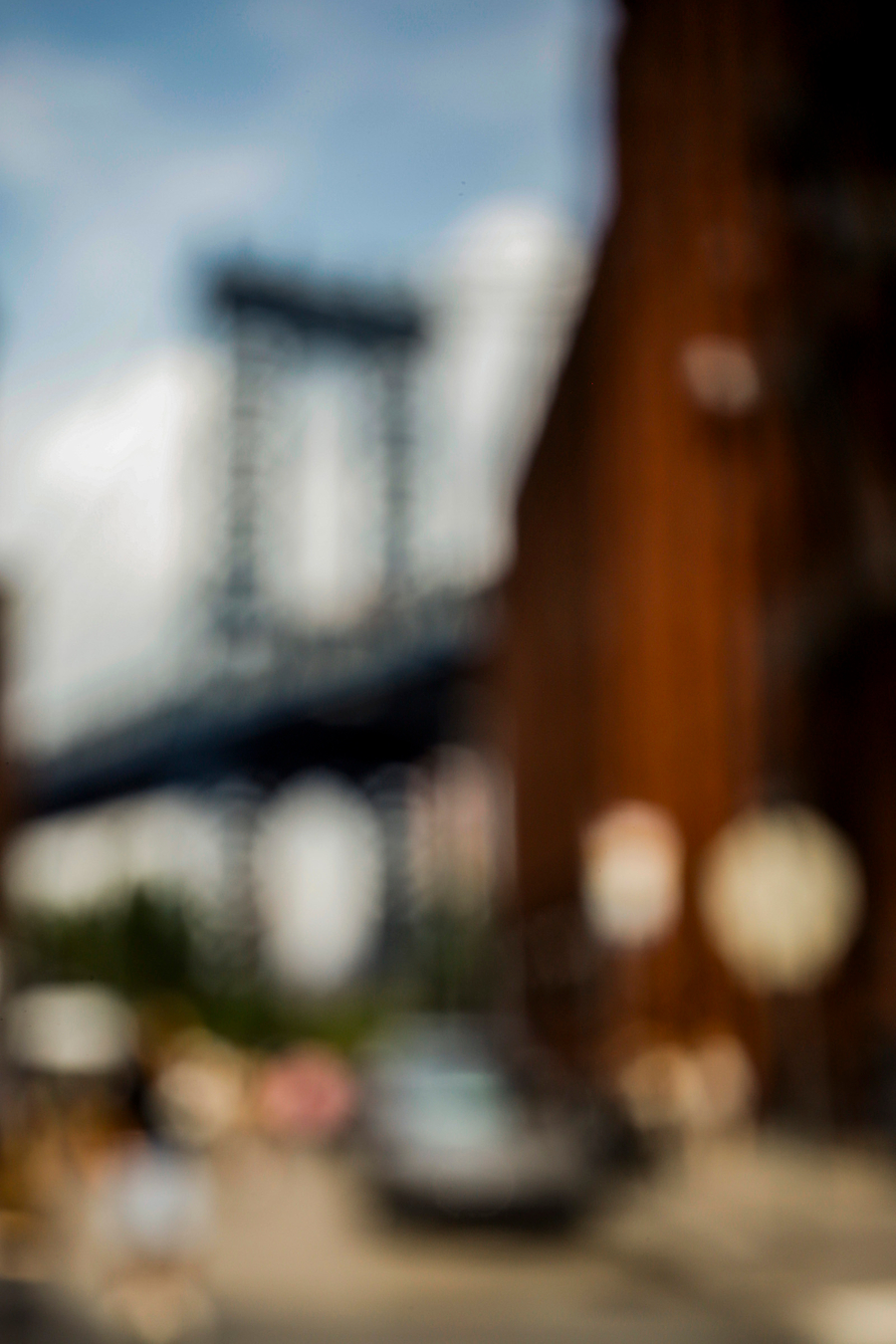 Christina Leslie, Dumbo, 2023. © Christina Leslie / Courtesy Stephen Bulger Gallery
Christina Leslie, Dumbo, 2023. © Christina Leslie / Courtesy Stephen Bulger GalleryPinhole Parishes (2023–25) focuses on several parishes in Jamaica, inspired by Leslie’s family stories pre-immigration to Canada. Tales of her relatives from the late 1960s and early 1970s were recalled with deep fondness—this was a period marked by great optimism about Jamaica’s post-colonial independence, by the rise of ska and reggae, and by burgeoning technological and cultural shifts. At the time, very few people had access to photography; few owned cameras, and developing film often required travel to Kingston. As a result, memories were primarily preserved through oral storytelling, creating a poignant mix of presence and absence. To bridge the gap between that past time and her own experience, Leslie used novel but unassuming materials (a tea bag, tape, and gauze) to devise a pinhole camera that creates evocative, nostalgic-feeling photographs echoing the aesthetics of the area while drawing on locations from her own experiences visiting Jamaica and connecting with its people.
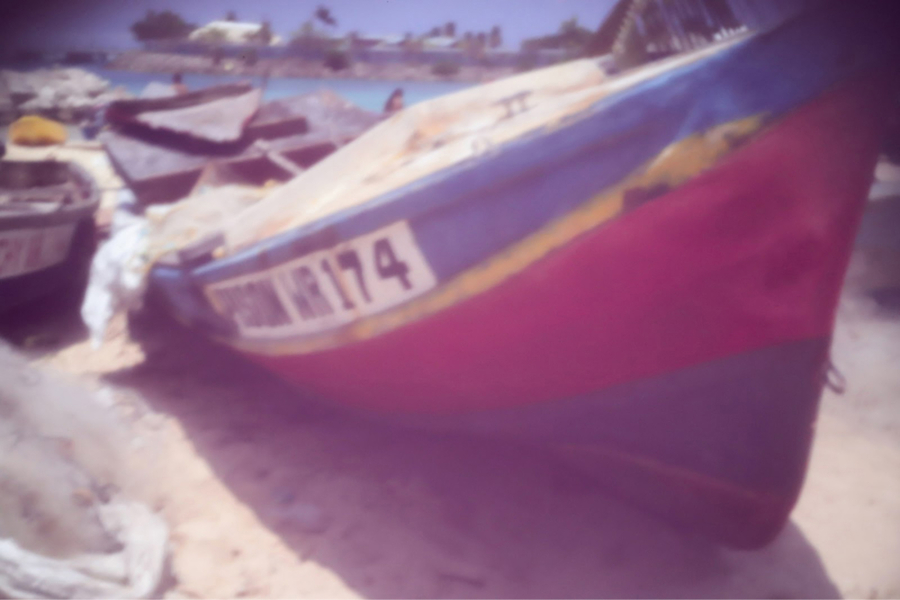 Christina Leslie, Pinhole #6, 2024. © Christina Leslie / courtesy Stephen Bulger Gallery
Christina Leslie, Pinhole #6, 2024. © Christina Leslie / courtesy Stephen Bulger Gallery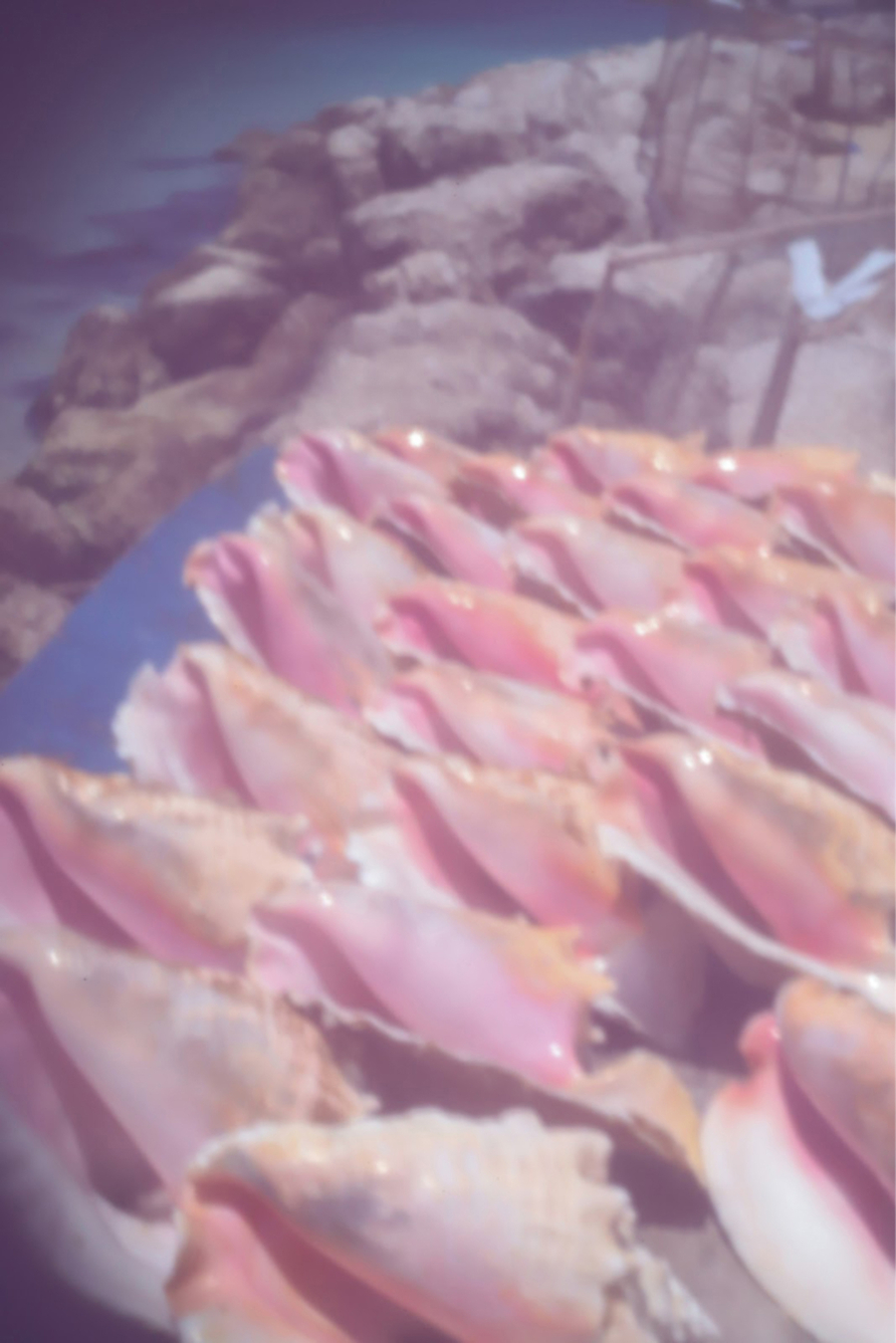 Christina Leslie, Pinhole #10, 2024. © Christina Leslie / courtesy Stephen Bulger Gallery
Christina Leslie, Pinhole #10, 2024. © Christina Leslie / courtesy Stephen Bulger GalleryBrought together in Pinhole Portraits and Places, these three series exemplify the throughlines of Leslie’s experimental yet rigorous approach to deconstructing, reframing, and redressing omissions in the histories of art and photography. Foregrounding the handmade and the personal, and remixing artistic sources and aesthetics, her unique fusion of antiquated/adaptive process and decolonial critique opens the historical record to introduce spaces of new possibility.
Presented by Stephen Bulger Gallery
